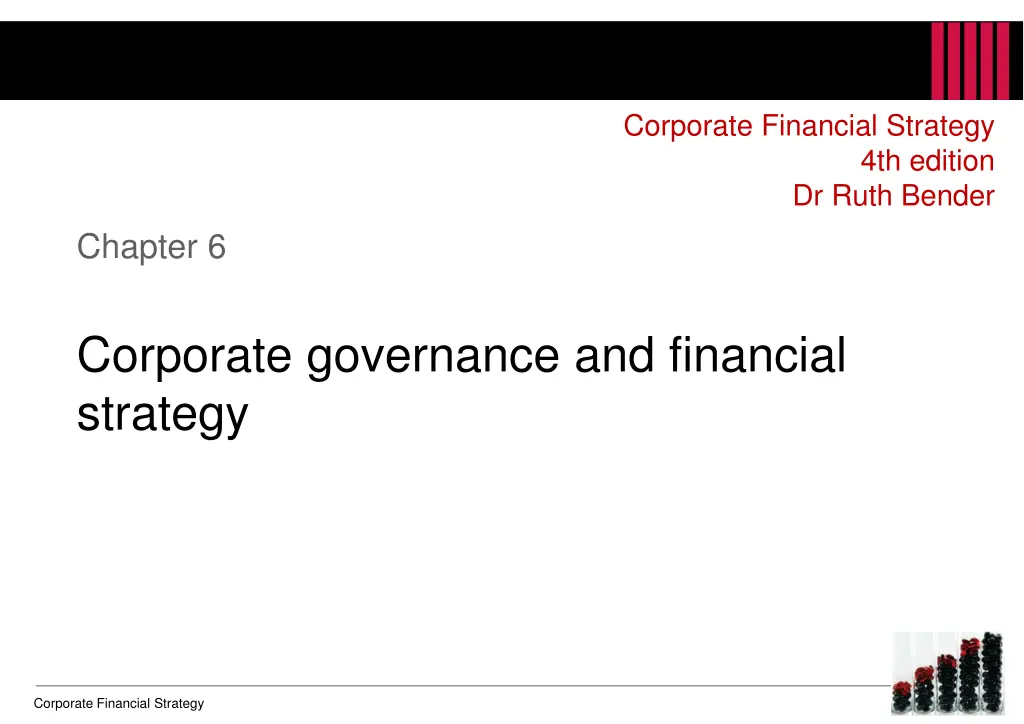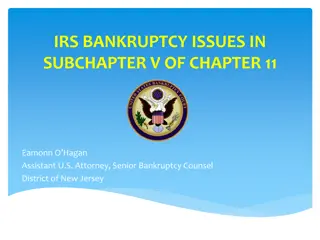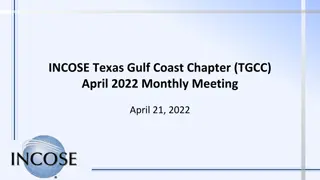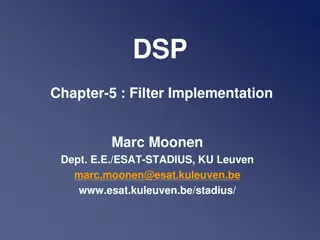
Corporate Governance and Financial Strategy: Key Concepts and Principles
Explore the intricate relationship between corporate governance and financial strategy, examining topics such as ownership life cycle stages, executive remuneration plans, financing strategies, control mechanisms, and stakeholder considerations. Understand the evolving role of corporate governance across different ownership structures and sizes of organizations. Gain insights into the importance of effective corporate governance in driving value creation and sustainable business growth.
Uploaded on | 0 Views
Download Presentation

Please find below an Image/Link to download the presentation.
The content on the website is provided AS IS for your information and personal use only. It may not be sold, licensed, or shared on other websites without obtaining consent from the author. If you encounter any issues during the download, it is possible that the publisher has removed the file from their server.
You are allowed to download the files provided on this website for personal or commercial use, subject to the condition that they are used lawfully. All files are the property of their respective owners.
The content on the website is provided AS IS for your information and personal use only. It may not be sold, licensed, or shared on other websites without obtaining consent from the author.
E N D
Presentation Transcript
Corporate Financial Strategy 4th edition Dr Ruth Bender Chapter 6 Corporate governance and financial strategy Corporate Financial Strategy
Corporate governance and financial strategy: contents Learning objectives Illustrative stages in the ownership life cycle Changing role of corporate governance over the ownership life cycle Indicative attributes of lack of independence in a director Problems with performance measures in executive pay EPS growth as a target in different growth scenarios Control enhancement mechanisms (CEMs) Control enhancement mechanisms (CEMs) Structures of control: the Pyramid Structures of control: Indirect control Case study 6.3: Hollinger control structure Corporate governance mechanisms and the minority shareholder Corporate governance mechanisms and the lender Corporate responsibility and the drivers of value 2 Corporate Financial Strategy
Learning objectives 1. Apply a model to determine which aspects of corporate governance are most relevant at different stages of a company s life cycle. 2. Recognize the limitations of different types of executive remuneration plan, and evaluate how their performance measures link to the creation of value. 3. Understand and explain how differences in corporate governance regimes can affect the financing strategies of companies in those jurisdictions. 4. Contrast the different mechanisms by which block-holders can control a company, and explain the impact, positive and negative, that this can have. 5. Explain why stakeholders merit consideration in a discussion of financial strategy. 3 Corporate Financial Strategy
Illustrative stages in the ownership life cycle Agency problems and accountabilities increase lower down the pyramid Sole trader Partnership Ltd company owned by management Ltd company owned with close associates Ltd company with private equity investors Ltd company owned by the public 4 Corporate Financial Strategy
Changing role of corporate governance over the ownership lifecycle Sole trader Partnership Ltd company owned by mgt Ltd company owned by associates Ltd company with private equity investment Ltd company with wide ownership Agency problems None None until organization size requires delegation Some Some Many Internal control & reporting Manage the money Manage employees Regular accounts Division of duties and formalised internal controls. Sophisticated reporting systems. Reporting to outside shareholders. (All increase as the business develops) External reporting Not required May need to file accounts Reporting to investors Reporting to investors, and possibly to regulators Extensive reporting External audit No need Optional Compulsory in some regimes Generally required by investors Generally compulsory / demanded by investors Compulsory Management and direction Self Partners Directors Management and investors Management, with input from PE investors Professional mgrs & NEDs Management remn To suit self and business needs To suit partners and business needs To suit owners and business needs Agree with external investors Agree with investors; will include equity as incentive to grow capital and exit Agree with external investors and governance regulations 5 Corporate Financial Strategy
Indicative attributes of lack of independence in a director Has been an employee or executive of the company or a related company in the past X years. Is a close family member of a director of the company or a related company. Has had a significant business relationship with the company in the past Y years. Is a professional adviser to the company, or has some other business relationship. Represents a block shareholder or a major lender to the company, or has significant business transactions with same. Holds cross-directorships with other members of the company s board. Participates in the company s pension scheme or share option scheme. Has served on the board continuously for more than Z years 6 Corporate Financial Strategy
Problems with performance measures in executive pay Profit, earnings per share, and eps growth Accounting policies can be chosen selectively Use of debt distorts eps Investment requirements can distort figures Risk is not taken into account Dividend policy vs. share buybacks can distort Does profit clearly relate to shareholder value? All issues as per eps, etc. Distorted over project life Affected by company s growth rate Effects of inflation can distort Not comparable to cost of capital Is the share price a good measure for exec performance? Complex for execs to understand Treadmill of expectations Quality of information? (not audited) Subjective? Perception of soft measures Return on Capital Employed Total shareholder return (TSR) Non-financial measures 7 Corporate Financial Strategy
EPS growth as a target in different growth scenarios eps growth of RPI+X% is a commonly used base measure eps growth does not necessarily lead to shareholder value! High plc P2 Share price Low plc P1 P0 T1 Now Time 8 Corporate Financial Strategy
Control enhancement mechanisms (CEMs) CEMs which work by giving block-holders enhanced voting rights Shares with multiple voting rights Non-voting shares Pyramid structures CEMS which lock in control Priority shares with veto rights over certain decisions Voting rights ceilings (which limit voting power regardless of how many shares are owned) Ownership ceilings (which prevent transfer of shares to owners if they would take the holding above a certain percentage) Golden shares (often used by governments in sensitive privatized companies) Source: Report on the Proportionality Principle in the European Union Available via http://ec.europa.eu/internal_market/company/shareholders/indexb_en.htm At the time of writing, the EU is considering giving additional voting rights and dividends to investors holding shares for a period of years, with the aim of encouraging long-term investment. 9 Corporate Financial Strategy
Control enhancement mechanisms (CEMs) CEMs which work by giving block-holders enhanced voting rights CEMS which lock in control Shares with multiple voting rights Non-voting shares Pyramid structures Priority shares with veto rights over certain decisions Voting rights ceilings (which limit voting power regardless of how many shares are owned) Ownership ceilings (which prevent transfer of shares to owners if they would take the holding above a certain percentage) Golden shares (often used by Governments in sensitive privatized companies) Source: Report on the Proportionality Principle in the European Union Available via http://ec.europa.eu/internal_market/compa ny/shareholders/indexb_en.htm 10 Corporate Financial Strategy
Structures of control: the Pyramid Controlling shareholder 51% Holding 2 51% Holding 1 51% Target Control is obtained through ownership of 13.3% of the shares 11 Corporate Financial Strategy
Structures of control: Indirect control Controlling shareholder 90% Holding 15% 36% Target Control is obtained through ownership of 47.4% of the shares 12 Corporate Financial Strategy
Case study 6.4: Hollinger control structure Black and Radler together control 79.2% of Ravelston, which in turn owned 78.2% of HLG, so their combined indirect ownership interest in HLG was approximately 62%. In turn, HLG owned a 30.3% interest in Hollinger. Through HLG, Black and Radler s indirect ownership interest in Hollinger was approximately 19%. Thus, every $100 transferred out of Hollinger and into HLG cost Black and Radler $19 but gave them $62, thereby tripling their funds at the direct expense of the Hollinger common stockholders other than HLG. Extract and diagram are from page 8 of the Report of the Special Committee of Hollinger http://www.sec.gov/Archives/edgar/data/868512/ 000095012304010413/y01437exv99w2.htm 13 Corporate Financial Strategy
Corporate governance mechanisms and the minority shareholder Reducing risk for minority shareholders Ability to vote on all resolutions, including voting directors onto or off the board Ease of voting Legal mechanisms for minority shareholders to take action against oppression by the majority or against expropriations by management Laws or codes protecting the minority during a takeover Laws protecting against insider trading Requirement for independent non- executive directors on the board Requirement for high levels of relevant financial and non-financial disclosures, for example details of transactions with related parties Increasing risk for minority shareholders Control enhancement mechanisms (CEMs) such as certain shares carrying multiple votes, or no votes, or ceilings on voting rights, or vetoes in certain situations 14 Corporate Financial Strategy
Corporate governance mechanisms and the lender Reducing risk for lenders Increasing risk for lenders Ease of ability of a lender to enforce their security to repossess assets if loan terms are breached Strong legal protection over property rights, including intellectual property rights (so that the company s assets cannot be expropriated) Bankruptcy laws that leave the existing executives in control of the company rather than letting creditors put in their own management Bankruptcy laws that enable management to protect the company against creditor claims Priority of social or government claims over the rights of secured lenders 15 Corporate Financial Strategy
Corporate responsibility and the drivers of value Some examples of driving performance through sustainability Innovative products to meet sustainability needs. Attract customers by corporate responsibility stance. Better workforce efficiency by treating people better: attract better people, more training, less absenteeism, lower staff turnover. Efficiencies due to energy and waste management. Possibly take advantage of incentives. Improved efficiencies. Reduced waste leading to reduced inventory. Better supply chain practices as companies work in coordination. Increased brand equity in the sustainable company. Compliance leads to legitimacy which extends the licence to operate . Investors perceive lower risk in companies that are compliant with best practice governance regulations. Driver of value Grow sales faster Increase operating profit margin Reduce cash tax rate Fewer fixed assets Less working capital Increase the period for which the organisation has a competitive advantage Lower cost of capital 16 Corporate Financial Strategy






















